
The Notre-Dame-du-Finistère church was built at the beginning of the XVIII century (then completed and restored several times) to replace a XVII century edifice, which was itself built on the spot of an old chapel located at the extreme limit (“finis terrae”) of Brussels territory. It is a mix of baroque (abundant and lavish internal decoration, wainscoting, stucco and false marble with composite patterns of garlands, shells and leaves) and classical styles (lower part of the facade-screen). It also contains many works of art from the XVI, XVII and XVIII centuries.
Close up of Notre-Dame-du-Finistère
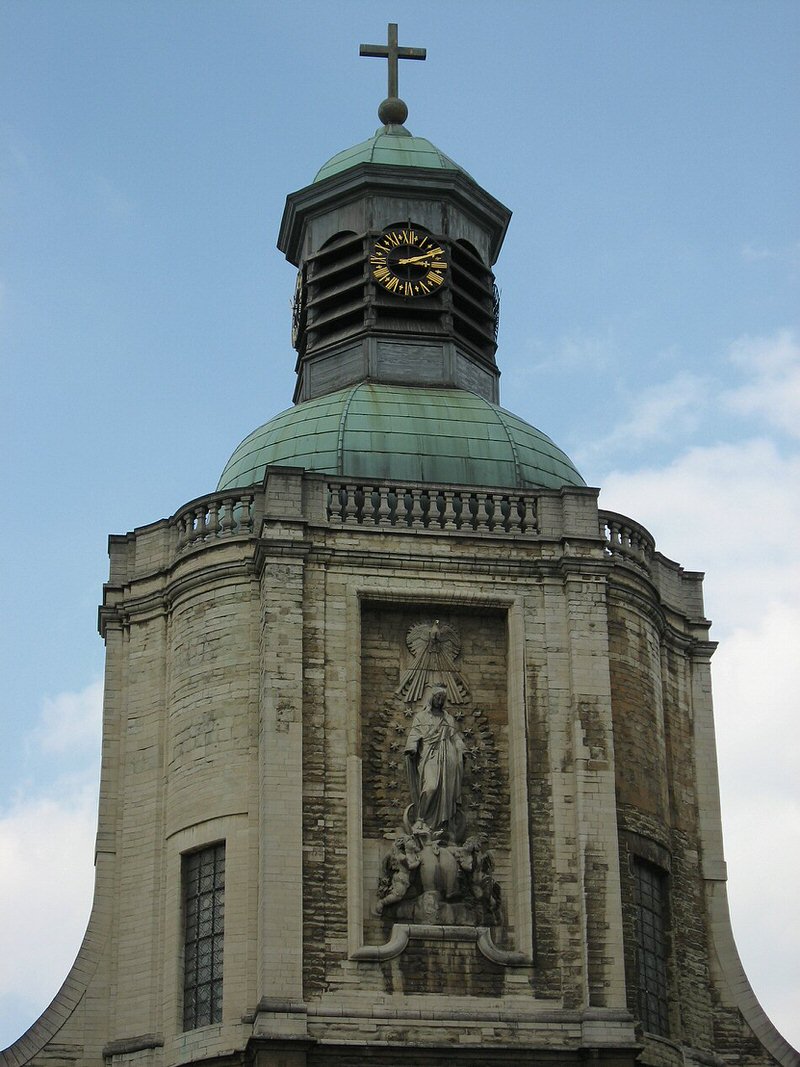
Inside Church Notre-Dame-du-Finistere
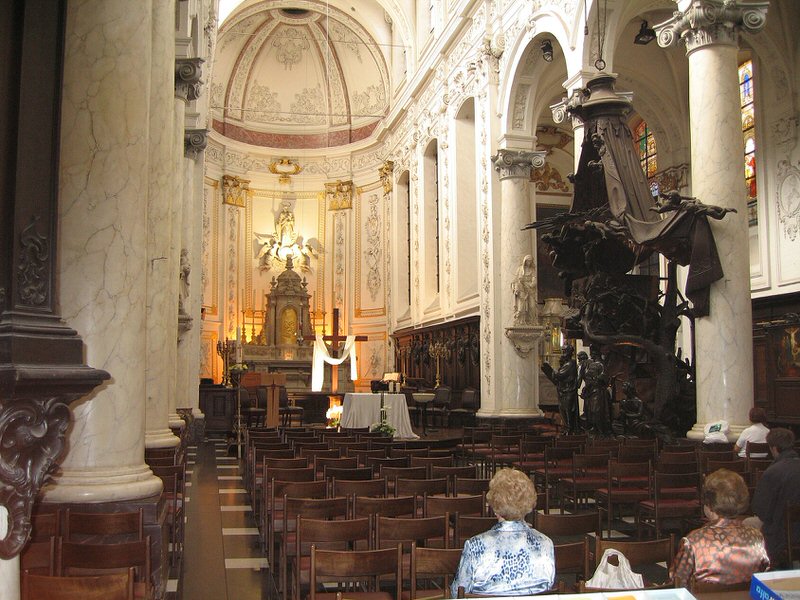
Inside, the nave, aisles and apse are decorated with stucco work and paneling.
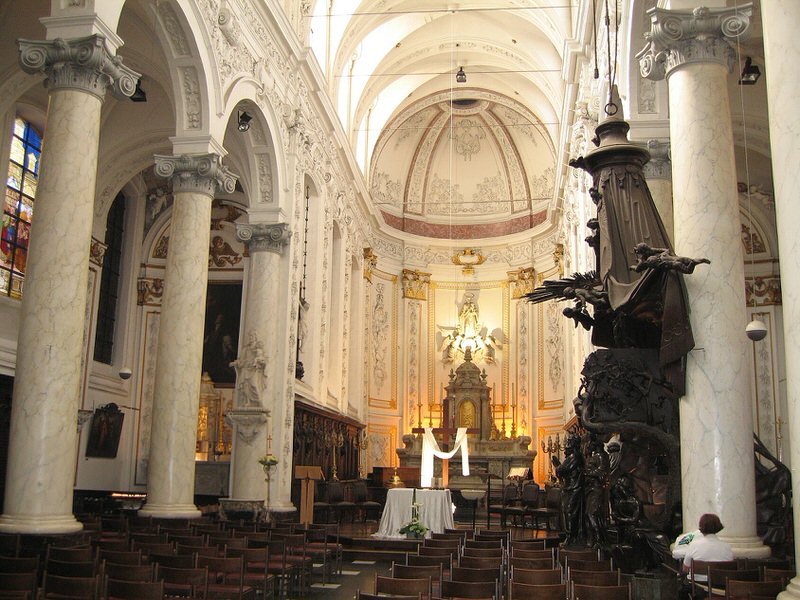
The three white marble altars were made by A Leclerq. The pulpit was made in 1758 by I. Duray. The café L’Espérance (1-3 rue du Finistère) has a shop front and an attractive Art Deco interior frequently used in films, of which the best-known is L’Orchestre rouge.

In the course of any normal week, thousands of people about their business in the Rue Neuve decide to drop in to this beautiful church that in good weather has Its magnificent double doors open directly
into the nave. They come to experience that unique combination of peace and tranquillity that any church offers to those that visit.
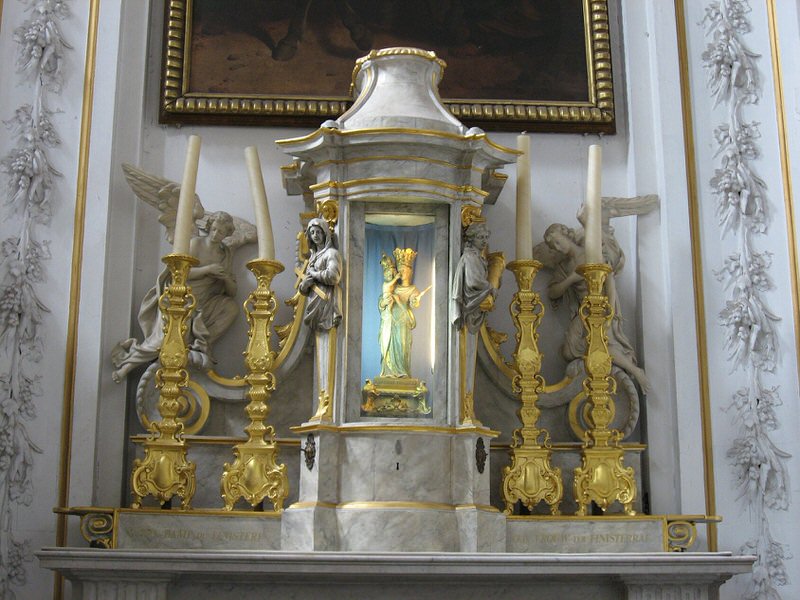
But people then discover the miraculous statue (object of numerous pilgrimages in the past) of Our Lady of Finistère on the side altar to the right of the sanctuary, a statue that tradition has it was transported
from Cap Finistère in Spain.
Snapshots of the baroque pulpit
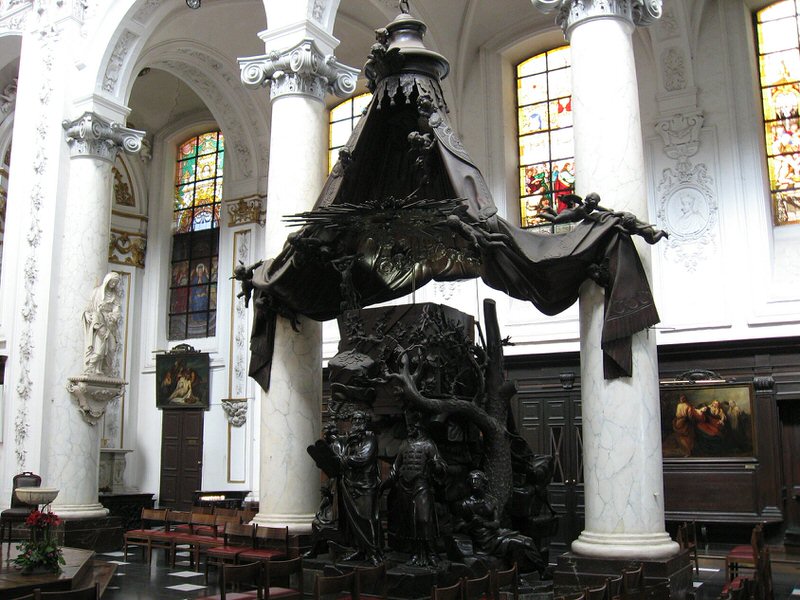
Some sources claim that this is the origin of the name of the church but others trace it to the fact that the original medieval (15th century) chapel was built outside the then city walls (finis terrae) among the small vegetable and laundry bleaching grounds. Most visitors go on to discover the Louis XIV carving of the stalls in the apse and the portraits of the twelve apostles above them, and to remark on the stunning baroque pulpit ( Duray 1758 ) with the representations of the tree of life and Moses with the ten Commandments; and also the tree of death, with the serpent in evidence, that indicates the fall of mankind. The crucifixion reminds the Faithful of Christ’s role in the Redemption.
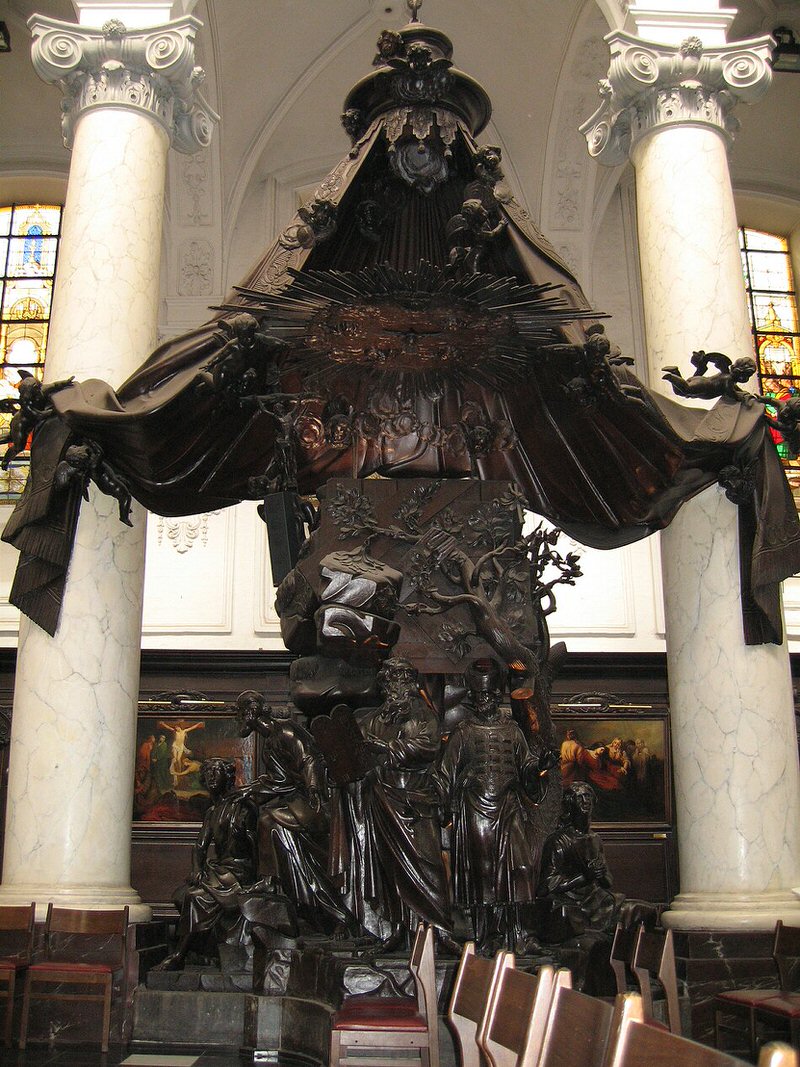
The Church houses an amazing collection of paintings ranging from that of Saint Philip Neri ( Crayer 17th century) above the side altar on the left, and the Flight into Egypt ( Van Severdonck 1859 ) on theright, too the Stations of the Cross, each one painted by a different artist and presented by parishioners to the Church in the past.
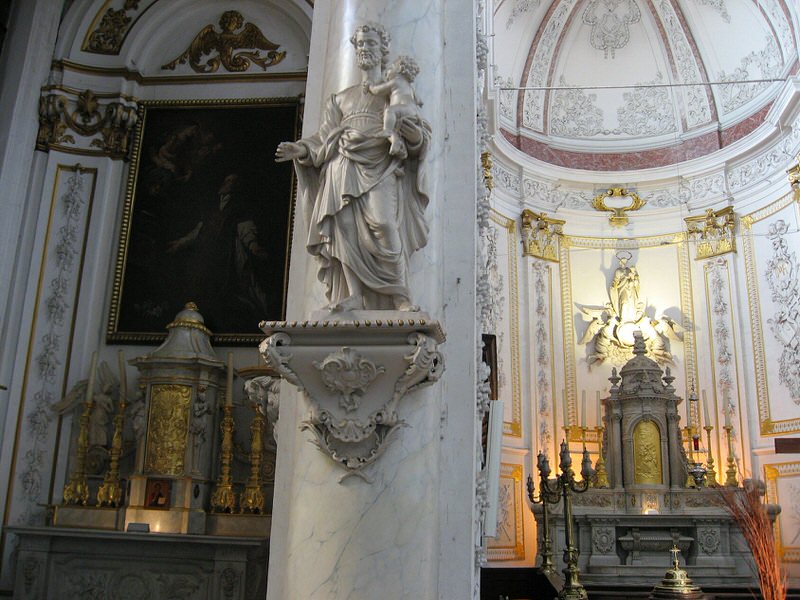
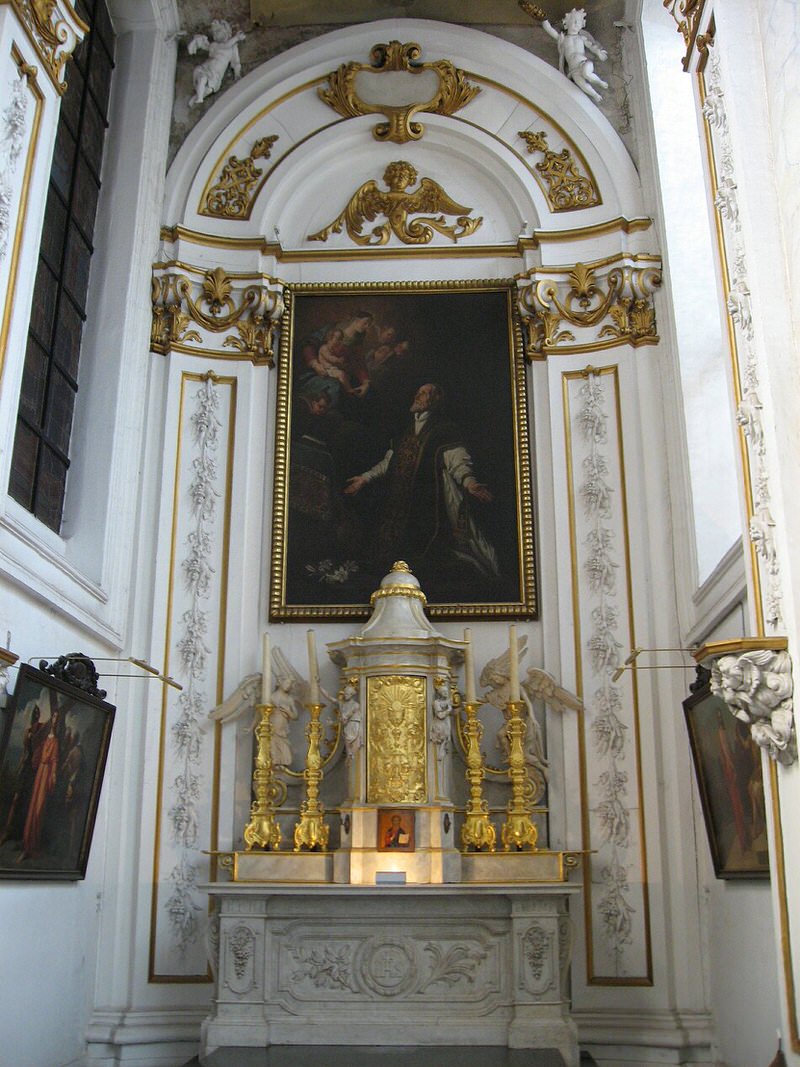
On sunny days the stained glass windows (installed between 1853 and 1860 by de Pluys and Richard Berns ) provide a splendid illumination of the church, so recently restored.
Stained glass window

The Lady Chapel, an addition on the right hand side of the Church, houses another famous statue of Our Lady — Our Lady of Good Luck. This statue was brought to Finistère from Scotland at the time of theReformation. Visitors find the peace of this small chapel very comforting and often take the opportunity of writing their intentions in the book provided at the entrance to the chapel.
Our Lady of Good Luck
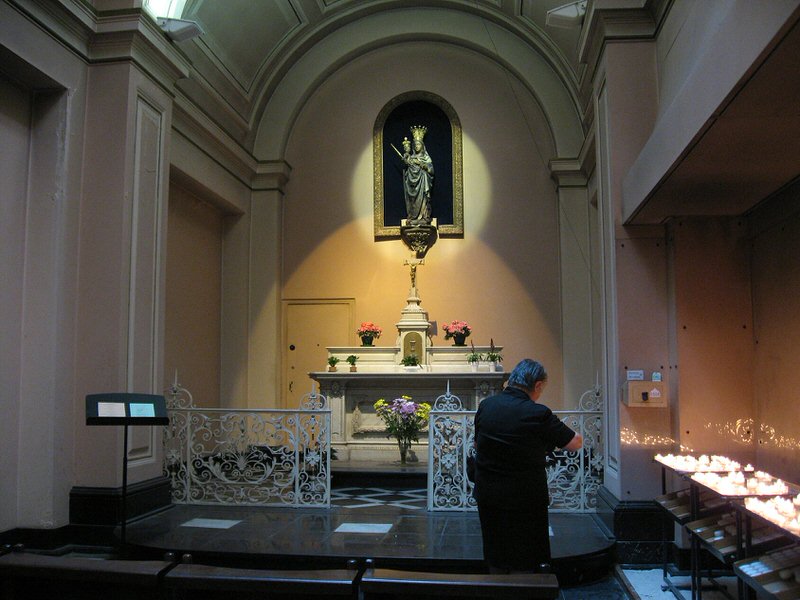
It is not just the visual arts that are represented here since every Monday a free organ concert draws music lovers into the Church. This treasure trove of our Church serves even more spiritual functions than it does artistic since as the confessional church of Brussels a priest is available daily to hear confessions, and a lay team provides the services of a welcome desk also every day. Details and times of these events can be found overleaf.
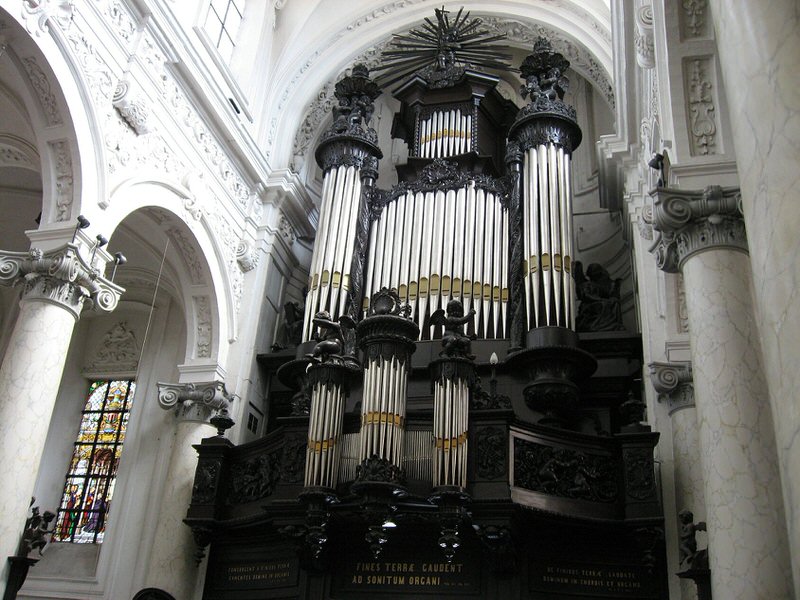
The church organ

The detailed history of how the medieval church was replaced by a new building and then extended to accommodate the Lady chapel; of the effect of the invasion by the Netherlands and of the increasing number of pilgrimages to the church, all these are explained in greater detail in the brochures (in French and Flemish) available for inspection at the Welcome Desk. Tours of the area and of the other city center churches are organized in English. Details and brochures again from the Welcome Desk.
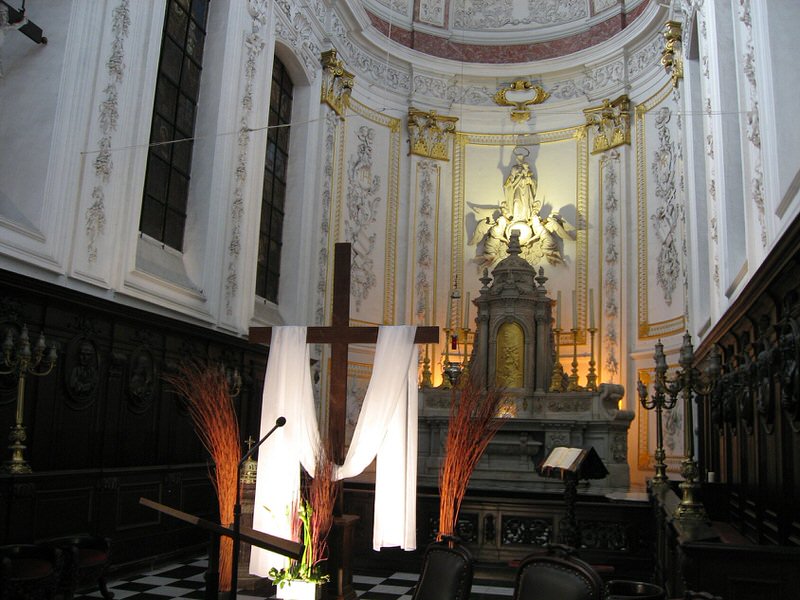
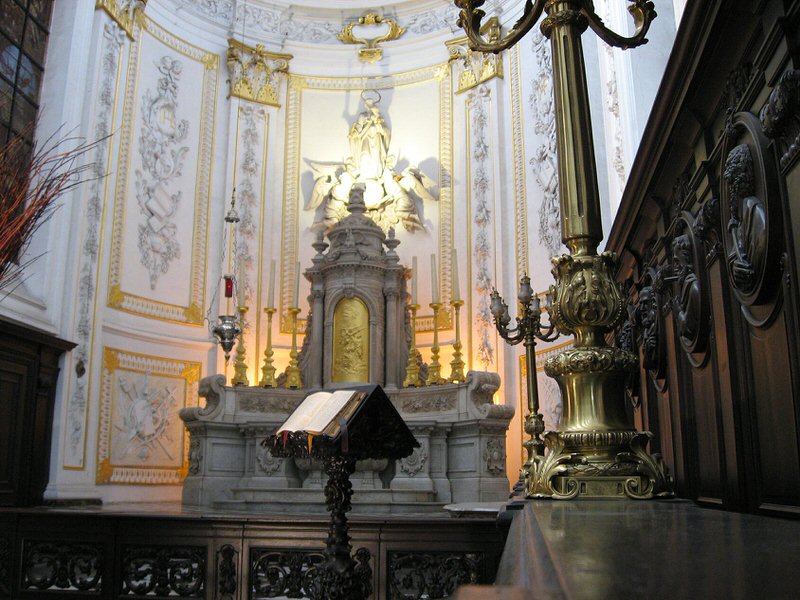
It is interesting to notice that remnants of the early history of Brussels can be traced in street names like Rue aux Choux / Koolstraat and Rue de la Blanchisserie / Blekerijstraat.

However the important dates in the growth of the Church are listed below:
- 15th Century Primitive Chapel
- I 617 Church rebuilt and consecrated
- 1620 Our Lady of Finisterrae installed
- 1646 The church becomes a parish church
- 1654 Church extended

2 comments
Hi,
Visiting the site has brought back a lot of memories. Thanks a million times for it.
I was in Brussels for 4 fabulous year and it had become a second home to me. First being my home country India.
The photographs at the site are magnificent and the description very good. I sincerely wish you will include other sites of Brussels and other cities in Belgium.
Thanks once again.
Best regards,
Savio R.
PS: I was one of those thousands who would drop into the chapel of Our Lady of Success for a quite pray and enjoy the peace and tranquility that this little chapel had to offer.
Thank you for the kind words Savio,
Glad to know you enjoyed the city and the site itself.
I am currently working on my description of my trip to the Philippines on another site but when that's done I'll more than likely continue the job here.
Regards,
Vince